The Making Of Kill List
The story behind the British horror classic...
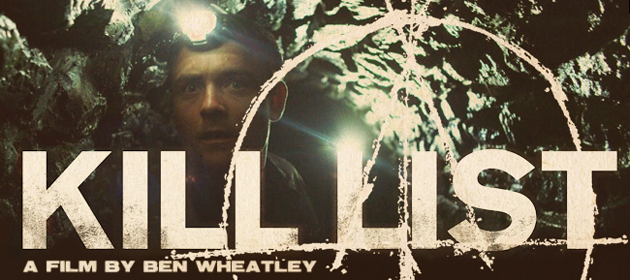
The script
Ben Wheatley : I wrote the script in a cottage on a seafront, Christmas 2009, so I was at the dinner table writing this thing while my wife and son were playing board games and watching telly, so I knocked it out then.
It had been a treatment that had been kicking around for a while.
We actually took it to Warp with a prequel to Down Terrace but they liked Kill List so we went forward with that.
A lot of different things inspired it. We’d talked a lot with Andy Stark, who produced Down Terrace, and he’d wanted to do a horror film the first film out, but I said “No, I’ve written a crime film.” And he said, a bit disappointed, “Oh, really?”
But then he read it and said, “Okay, that’s cool, we’ll do that.” And I promised I’d do a horror film next.
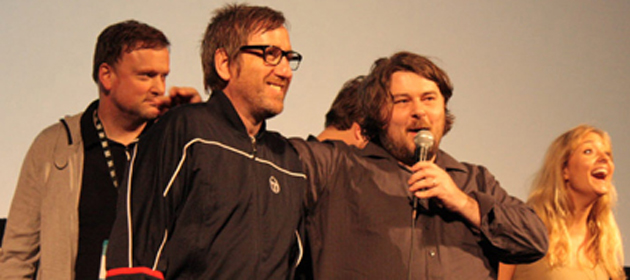
Get Jakarta
I’d been working on a few different scripts, one of them was called Get Jakarta .
Andy knew some people in the Philippines and I’d had this idea to do a crime horror crossover, so Get Jakarta was essentially Get Carter set in the Philippines, which then turned into a HP Lovecraft thing.
We’re actually talking about doing some Lovecraft at the moment, because it’s out of copyright so it’s easy to get to get the rights to, but also because that whole setting is really interesting.
But anyway, a lot of plot elements from Get Jakarta ended up in Kill List , like the cut hand, and the search and so on, but the project itself didn’t materialise.
But that idea bubbled around from that point on.
I also had another script I’d written called No , which was about a husband and wife who try to beat the recession by committing bank robberies.
I talked to Neil (Maskell) and MyAnna (Buring) about doing a short version of that, which didn’t come off for various reasons.
I worked with Michael (Smiley) on Down Terrace , and I had this pool of people who I wanted to work with, so I started to pull together these ideas to engineer a script which would allow me to work with these guys.

Mysteries
In terms of the mysteries in the film, the shooting script was a lot more on the nose, and there was an even clearer version of the script which the actors didn’t see, but we reduced it so that it would be more about mysteries than explaining what things meant, because that’s just dull.
The things you fear in your head are your own personal fears, so if I tell you what I’m afraid of and expect you to be afraid of it as well, that might not necessarily fly. So leaving those gaps for your own imagination is really important in horror.
I always used to be a bit snide about that idea, people would always go on about Cat People and say stuff like “Not seeing is much better than seeing, if you’re too gratuitous you lose a lot in horror.”
I used to think that was silly, but I think there’s a lot in that, and we used quite a lot of those tactics in Kill List , but we also show a lot as well - we don't cut away when perhaps you might expect us to.
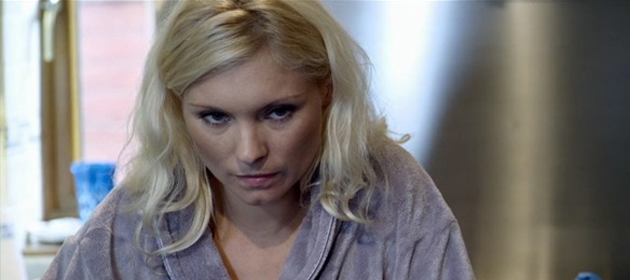
Politics
As for the political elements of the script, I’d watched the documentary The American Nightmare , about American horror films, and thought it was really brilliant, that idea that a lot of horror movies of the ‘70s and ‘80s were reacting to the period they’re in, which is something I’d already read a lot about before.
I’ve actually subsequently read a counter-argument saying that those guys jumped on that idea in retrospect, but I don’t believe that.
Reacting to your times with a metaphor of horror is really good, and that’s what we were looking at with Kill List , instead of the making-movies-about-movies type of horror film. Which is perfectly valid, but not what we wanted to do.
The recession is really interesting, because all of a sudden all bets are off across lots of different bits of society, and things that you expected were going to be okay but are now not necessarily.
The thing that brought it home to me was the almost complete collapse of the banking system three or four years ago. If that happened, we’d go very quickly into chaos.
Down Terrace was the start of that conversation, Down Terrace was about the illegal war stuff, and Kill List moves that on into recession.
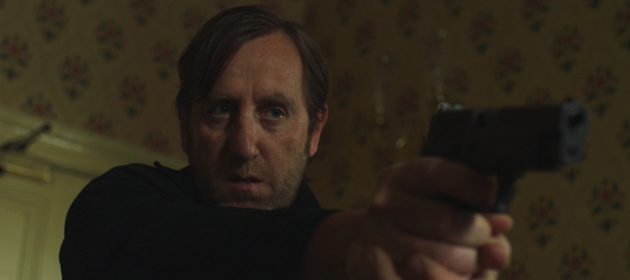
Michael Smiley
Michael Smiley: After working on Down Terrace with Ben, I knew that we’d be shooting Kill List at a great speed, and I knew to trust him – I knew that I’d be part of a process, rather than being a soft prop.
Sometimes acting can feel like you’re a guy in the corner; you’re moved into the mark, you say the lines, then they move you away again. They don’t give you any room to manoeuvre, for you to bring anything to it.
But on Kill List , it was a bigger crew, a bigger cast and a broader canvas than on Down Terrace , but we didn’t lose that feeling of spontaneity.
We shot really intensely. And when you weren’t shooting, you were standing behind the camera, looking at the monitor waiting to go back on again, itching to go back on again, you didn’t want to be behind the camera, you wanted to be in front of it. And that’s a rare feeling.
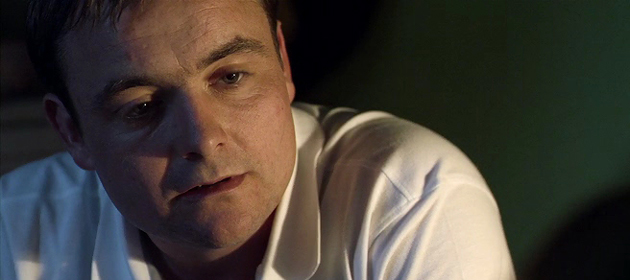
Neil Maskell
Neil Maskell: For me, it was such an exciting part, the arc of the character was so interesting. Any actor would cut their arm off for it.
One of the big things I’ve learnt as an actor is to make some choices that you keep to yourself – because then you and the character share a secret. The important thing is to not try and feed that in when you’re doing lots of improvisation “I must remember to mention that I had a dog as a child that died.”
Whatever that stuff is, it’s very much for you and you don’t want to be troubling the crew or the director or your fellow actors with all that stuff.
But for Kill List I came across a book called The Circuit by Bob Shepherd, which is not the sort of thing I’d normally read, but it’s a true story about ex-soldiers who become security contractors, and there was a lot I took from that in terms of experiences the character might have had that were useful, and didn’t compromise what was already in the text.
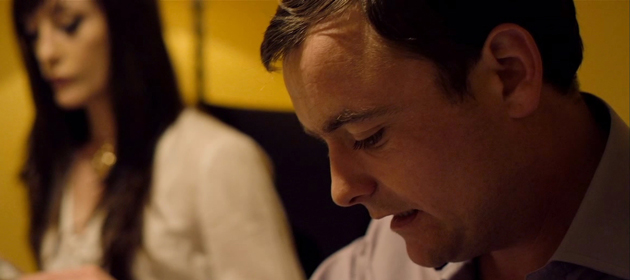
The shoot
Ben Wheatley: We shot for three weeks, all six day weeks.
We've just shot another thing called Sightseers , and that was a four week shoot.
When we got to week three and said “Well, that was Kill List .” Everyone said “Fuuuuck, was it? How did you do it?”
But then Down Terrace was eight days. Now, from the perspective of having just done a film over a month, it’s ridiculous, I can’t even start to think how we did that. But I’ve been merrily going around and telling everyone “It’s easy!”
In the first three days of Kill List we covered everything in the house, and that was interesting.
Because we were in a contained environment, we worked really superfast, running from room to room.
We went back to that house and did another half day there, the day after the wrap party, just to pick up a few bits of mooching about, the calmer stuff. We’d got all the drama, but we missed the quiet moments.
And most of that stuff made it into the movie as well, you can spot it because Neil looks particularly haunted.
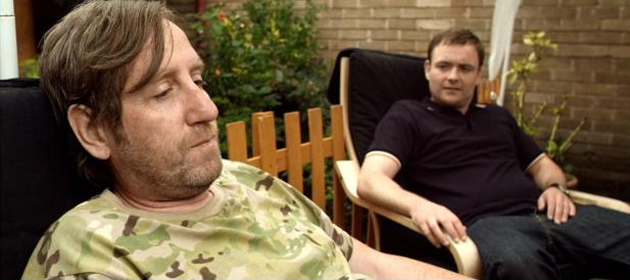
Cut-scenes
Neil Maskell: Despite the fact we shot it so quickly, there was a lot that didn’t make it into film.
There was a scene of us discussing the sandwiches that we bought to go on the journey and we just kept shooting it. I think every day.
Ben Wheatley : It was important.
Neil : It didn’t go in the film!
Michael Smiley : There was a helicopter shot zooming into the sandwiches, I remember that, that cost a lot of money.
Ben : Yeah, and then there was the special camera we built, to shoot from inside the sandwich.
Michael : Sandwich-vision.
Neil : It became a running joke on the film. “Really? We’re doing the sandwich thing again?”
Ben : There was a lot of stuff that didn’t go into the film.
Michael : A lot of banter between Jay and Gal that didn’t go in, but really informed our friendship and our characters. We were having a laugh, and if I could make Neil laugh and the crew laugh, then my day was good. Amongst all this carnage, we were pissing ourselves.
Ben : It was a very happy shoot.
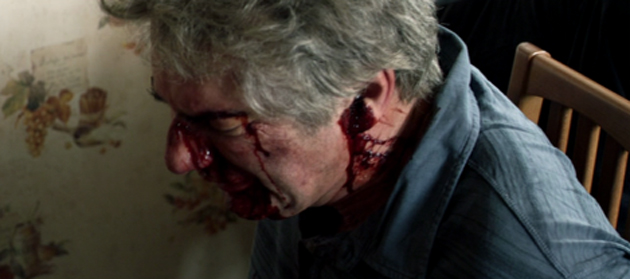
The librarian
Ben : It only really came home to everyone what a horrible film we were making when we did the librarian scene.
Michael : Which was filmed in a really grim housing estate. You could hear the screaming, and people were walking past without batting an eyelid, and you were thinking “This isn’t really an unusual sound in this housing estate.”
Neil : We were quite into it by the time we filmed that scene, so I was a bit lost in it by that point. It felt a bit like a dream.
During the moment in that scene, where the librarian thanks me for it and says "glad to have met you" and all that stuff, I felt a bit spaced out. I wasn't sure what was real.
One of the useful things about having the small crew and the minimal lighting and a cameraman that moves with you with a kind of synthesis, you could easily get lost in the moment.
Michael : And the shoot moved so quickly it felt like we were being ghosted between locations, like they ghost you between prisons to disorientate you.
Neil : And the story started to suffuse our morality. We were sitting in a Costa coffee one morning in Sheffield, and there was a girl serving us.
Despite it being early in the morning, Michael was as sharp as a razor. But I’ve got the script out, trying to work my way through the 800 scenes we had to get through that day – and the waitress brings over the coffees, and Smiley says: “Are we killing the priest today?”
And I distractedly reply: “Yeah, yeah, yeah yeah.” As if it was completely normal. And Smiley says: “We’ll shoot him in the back of the head, yeah?” And I went: “Yeah, yeah, yeah. We’ll just… yeah.”
He’s done it for his own amusement, but the girl went ashen, and her hand was shaking as she put the cups down.
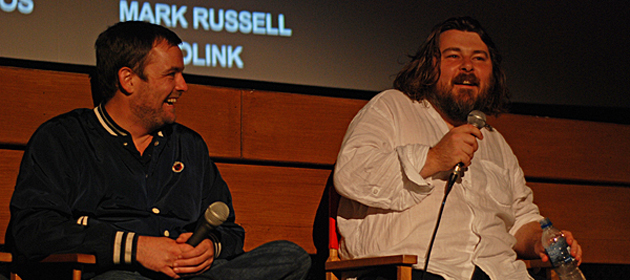
Reaction
Michael: The first cut I saw was at the cast and crew screening, and it was ungraded and it didn't have the soundtrack and I thought it was great.
But when I saw the finished thing, with the soundtrack, it blew me away.
When I first saw it, I was looking at my performance and wondering if I'd let myself down, if I was good enough, but I came away thinking “I'm not embarrassed by that, that's okay.”
I know it sounds selfish, but then I can look people in the eye afterwards. And if they go “It's a shit film.” I can say “But I was okay in it, wasn't I?”
I loved the film, even in its rough form. But we believed in it from the start, we knew it was a good film.
We didn't know it would be received to this amount of acclaim, obviously. But the time that we had together was so special that even if everyone fucking hating it, we'd have come away with a special moment in our lives.
Neil: I find the first couple of times viewing my big face really not a pleasurable experience. I'm not watching my performance, I'm going “Look at that big fucking moon head.”
But once I was over that, you've got to be really proud of it as a bit of work, it's trying to do more than what most films are, and it's throwing questions and ideas that are big and interesting and challenging for the audience.
And I've done a lot of work that isn't necessarily that, so I'm just really excited to be a part of it.
And something my father worked on as well, he gaffered the film. The film's so much about family, so it was brilliant and fortuitous to have him there. So I had my dad there to talk to about when I was Harry's age, and the close relationship I had with my dad as a kid, and that fed into it. It was amazing.
Michael: This film is one of the greatest experiences of my acting career. Those three weeks we had together in Yorkshire was just the best. Just the best feeling.
Kill List is out now on DVD and Blu-ray and was Sam Ashurst's favourite film of 2011
Sam Ashurst is a London-based film maker, journalist, and podcast host. He's the director of Frankenstein's Creature, A Little More Flesh + A Little More Flesh 2, and co-hosts the Arrow Podcast. His words have appeared on HuffPost, MSN, The Independent, Yahoo, Cosmopolitan, and many more, as well as of course for us here at GamesRadar+.


